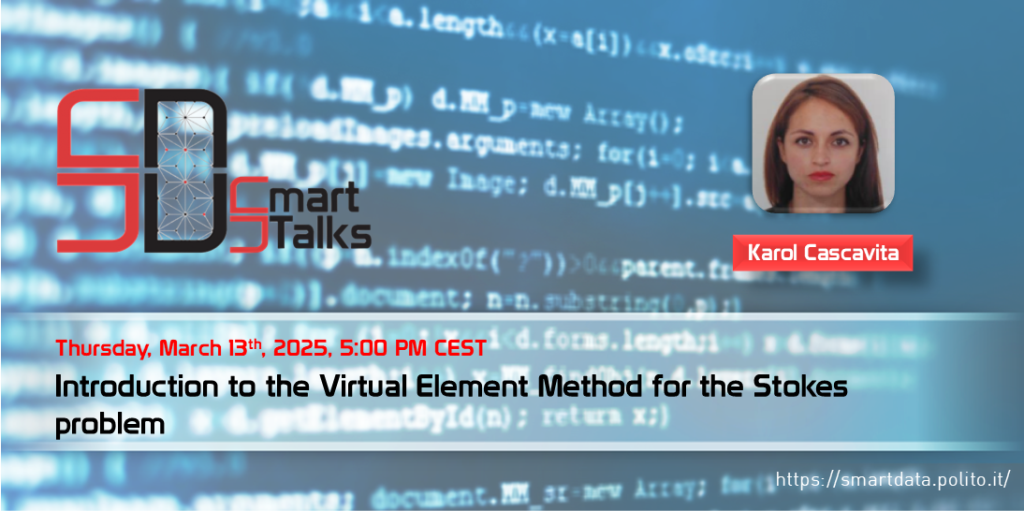
Presenter: Karol Cascavita
Thursday, March 13th, 2025, 5:00 PM
Location: Sala Grande Covivio, Corso Ferrucci 112
ABSTRACT
The Virtual Element Method was introduced in 2013 in the seminal work [1]. It is nowadays considered to be an extension of the Finite Element Methods to more general meshes. The cornerstone is the ability to build shape functions for general polygons, allowing in turn to construct a robust method allowing the use of arbitrary polytopes and arbitrary polynomial order.
The use of the “virtual” label arises from the fact that non-polynomial test/trial functions can appear, whose closed-form in practice are not explicitly known and not even computed. This is possible by means of projections to polynomial spaces and the use of carefully selected degrees of freedom. In this talk, I will give a quick introduction to the VEM, specifically applied to the Navier-Stokes problem, and I will provide some hints of how to build the method in its algebraic realization.
[1] Beirão da Veiga, F. Brezzi, A. Cangiani, G. Manzini, L. D. Marini and A. Russo (2013), Basic principles of virtual element methods, Math. Models Methods Appl. Sci. 23, 199–214
BIOGRAPHY
Karol Cascavita is a PhD student at the Department of Mathematical Sciences at the Politecnico di Torino. Her research interests include advanced numerical methods as Virtual Element methods and Hybrid High Order methods, which will be explored in the PhD thesis. In particular, the aim of the research project is to develop advanced and innovative parallel numerical methods for solving large-scale complex physical models. The area of applications spans to real-world problems in fields such as fluid dynamics.Keywords related to my areas of interest: Virtual Element methods, Hybrid-High Order methods, Computational fluid dynamics, High Performance Computing.
